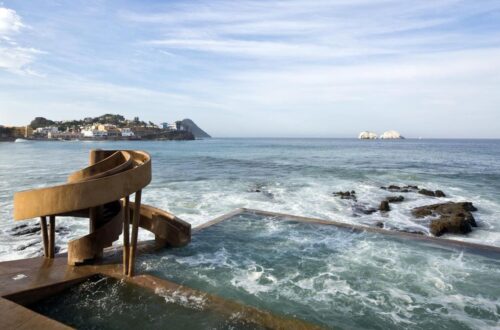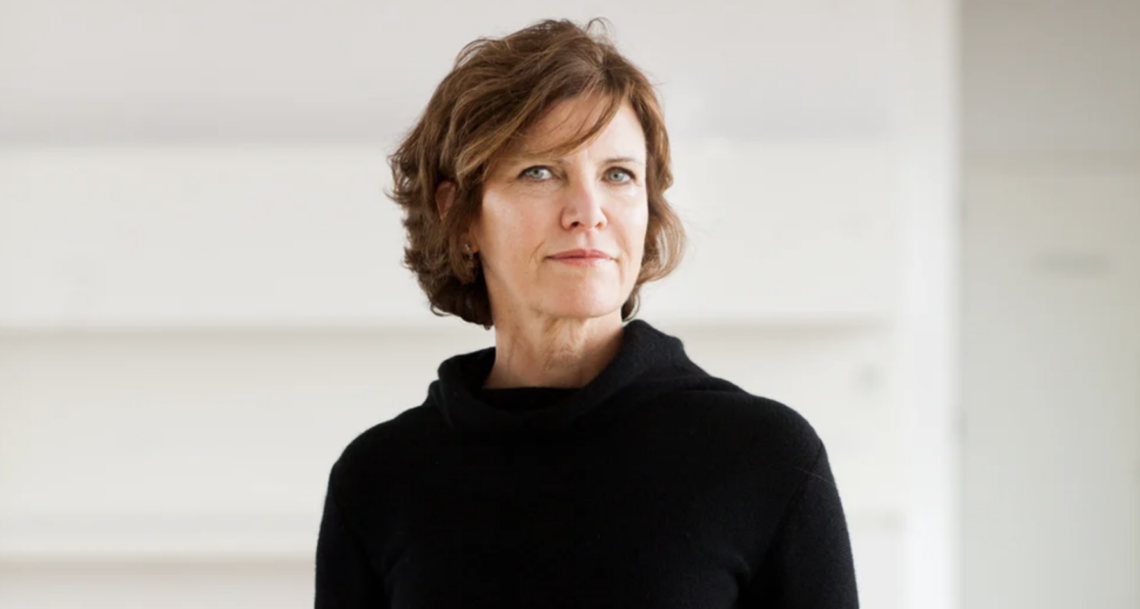
Jeanne Gang’s Architectural Career
Jeanne Gang is an American architect most widely known for her Aqua Tower and as the founder of her firm, Studio Gang, with offices based in New York, Paris, San Francisco as well as Chicago. Aside from the Aqua Tower, she is also known as a pioneering designer with innovative responses to issues of environmental and ecological sustainability. By employing sustainable design techniques, she and her firm has managed to conserve resources, decrease urban sprawl and increase biodiversity.
Early Studies and Career
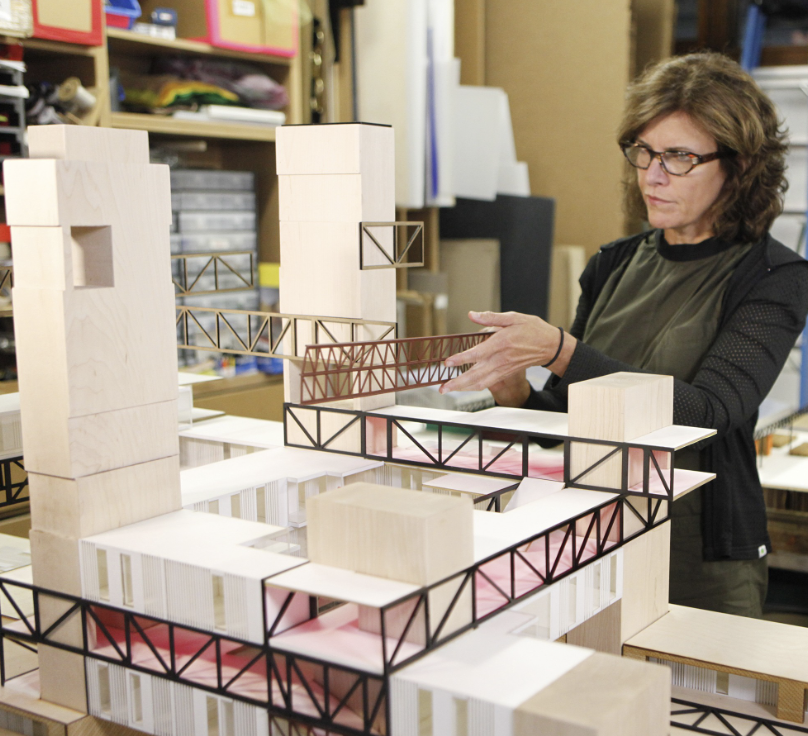
Gang’s start in the field of architecture started with her architecture bachelor’s degree from the University of Illinois in 1986. Shortly following this first degree, Gang was selected as a Rotary Foundation Ambassadorial scholar at the Swiss Federal Institute of Technology in Zürich, in order to study urban designing – an interdisciplinary program combining landscape architecture, urban planning, architecture and engineering. She then went on to earn a master’s degree in architecture from Harvard University in 1993.
Following the completion of her studies, Gang worked for several architectural firms, including OMA (Office for Metropolitan Architecture) in Rotterdam and Rem Koolhaas in the Netherlands, where she was employed as a project architect and lead designer (1993-95).
Founding Gang Architects
In 1997, Jeanne Gang opened her own firm, Studio Gang in Chicago. It quickly gained recognition for its innovative approaches to architecture, which often incorporated elements of nature, sustainability and community engagement. One of the key highlights of the firm still is one of Gang’s early notable projects, the Aqua Tower in Chicago, completed in 2009. However, the studio has also worked on various other projects, including the Arcus Center for Social Justice Leadership in Kalamazoo, Michigan, and the WMS Boathouse at Clark Park in Chicago.
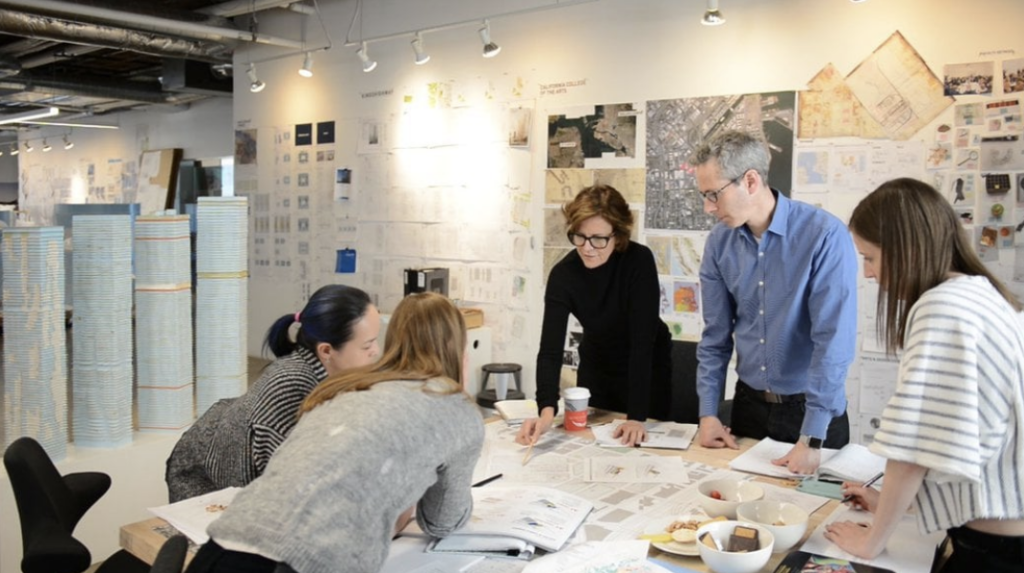
Philosophy: Studio Gang is known for its commitment to addressing contemporary challenges through design. Their projects often reflect a deep understanding of social, environmental, and cultural contexts, aiming to create spaces that are not only aesthetically compelling, but also functional and meaningful for the communities they serve.
Design Approach: The studio’s design approach is characterised by exploration and experimentation. They often draw inspiration from nature, geometry, and materiality to create buildings and spaces that are dynamic and responsive. Studio Gang is particularly known for its emphasis on form finding, where design solutions emerge from rigorous analysis and research.
The Aqua Tower
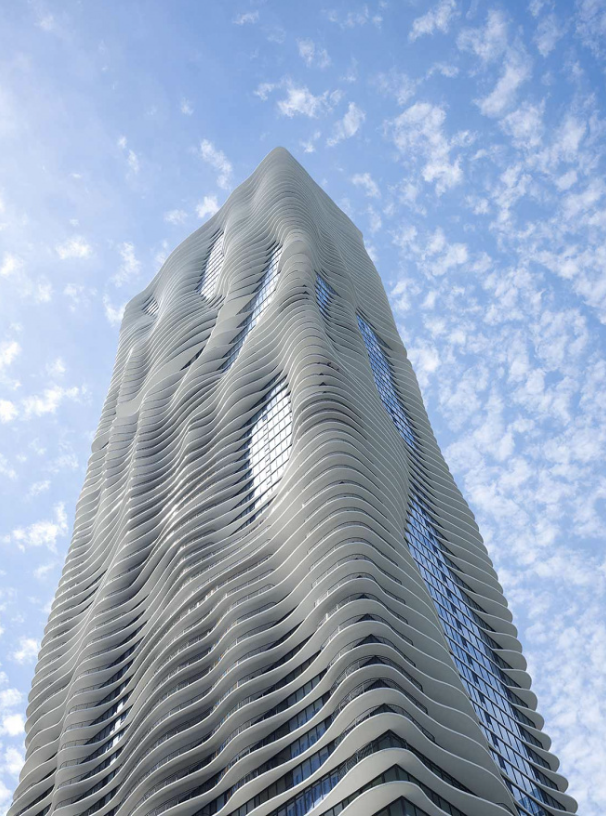
The Aqua Tower is arguably one of Gang’s most prominent and awe-inspiring builds. The journey started in 2004, when architect and developer, James Loewenberg invited Gang to design the Tower. At the time of its build, it stood as one of the tallest woman-designed buildings in the world with a towering height of 82 stories, reaching 876 feet. Combining a hotel, offices, rental apartments, condominiums and parking, the Aqua Tower manages to facilitate strong connections between different groups of people and the city.
The building’s curved facade and balcony overhangs – arguably its most notable features – were designed to serve a dual purpose: on one hand, they lend the Tower a strong visual interest through their evocation of rippling water, while on the other hand, diffusing strong winds, which allows balconies to be placed on every floor and all four sides of the building.
To this day, the Aqua Tower still remains as one of Chicago’s largest green roofs as well as a primary engineering and architectural feat of Studio Gang.
Teaching and Research
Gang, alongside running her Studio, is a Professor in Practice at the Harvard Graduate School of Design, where her teaching and research focus on the cultural and environmental aspects of buildings’ reuse. Her continuous research has led to the publication of her four books on architecture, with the latest being, “The Art of Architectural Grafting.”
Awards
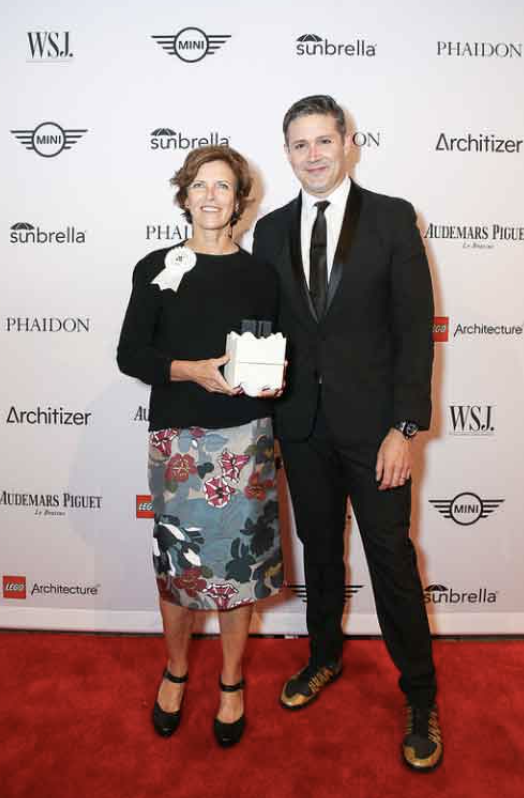
Last but not least, Gang has been the recipient of various awards. Gang’s studio firm participated in the Venice Biennale in 2004 and 2012, and received the Emporis Award in 2009 for the best new skyscraper of the year. In 2006, Gang received the Arts and Letters Award in Architecture from the American Academy of Arts and Letters, and she was awarded a MacArthur Foundation “genius grant” in 2011. In 2013, Studio Gang Architects received the Architecture Design Award—awarded to an individual or a firm for “exceptional exemplary work in public, commercial, or residential architectural design”—from Cooper-Hewitt, National Design Museum.
Furthermore, she was also named one of 2019’s most influential people in the world by TIME magazine. Further accolades include WSJ. Magazine’s 2022 Architecture Innovator of the Year, the 2022 ULI Prize for Visionaries in Urban Development, the 2023 Charlotte Perriand Award, and Architectural Review’s ‘Architect of the Year.’
“I am honoured to be recognized by ULI, whose efforts to foster collaboration across real estate and land use disciplines are critical for shaping more resilient and equitable futures for our cities,” said Gang. “I hope this award will inspire even more developers, architects, planners, and policy makers to come together to realise places that can both uplift communities and support our planet’s greater network of living things.”
Current completed work from the 2020s
Gang’s works from the 2020s onwards include a myriad of residential skyscrapers in sprawling cities like San Francisco (2020), Honolulu (2022), and Brooklyn (2022). Moreover, she also refashioned a former coal-burning power plant into a student union in 2020 at Beloit College, Wisconsin.
During its construction in 2022, formerly known as Vista Tower, the St. Regis Chicago – the city’s third tallest building at the time – transformed the urban skyline while prioritising pedestrian flow at ground level. The skyscraper elevated its central volume to create a seamless pathway connecting the Chicago River and to surrounding outdoor amenities.
In 2023, Jeanne Gang unveiled expansions for two distinct museums: the Arkansas Museum of Fine Arts in Little Rock and the American Museum of Natural History in New York. Charged with enhancing circulation among a collection of diverse historical structures, Gang employed innovative design solutions. At the Arkansas Museum of Fine Arts, she linked the buildings with a pleated canopy, while at the American Museum of Natural History, she crafted a vast atrium space.
Sources and citations



